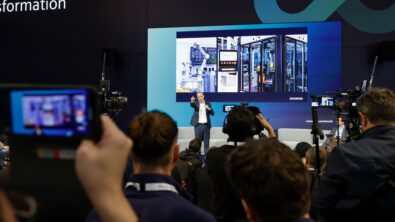Corporate
A brief history of manufacturing
Well bicycle manufacturing anyway! - as myfirst job after graduating from college in 1983 was working as for T.I.Raleigh, a huge manufacturer of bicycles based in Nottingham in the U...
Well bicycle manufacturing anyway! – as myfirst job after graduating from college in 1983 was working as for T.I.Raleigh, a huge manufacturer of bicycles based in Nottingham in the UK.

Mass production at its peak: Raleigh bicycle manufacturing factory in Nottingham, UK. My desk is marked with a red dot.
The factory was past its peak when I joined but it was still huge: 40 acresand employing 7,000 people! My desk in the production engineering office would shake as the press lines pounded out thousands of brackets every day, and the smell of machine oil and brazing gas filled the air. As a production engineer one of my assignments was to work on changes to the factory layout to accommodate a new BMX manufacturing line. This was done by using little shapes of colored card that represented the different machines, you layed them out on a huge table and then got in a big huddle with your colleagues and moved them around a lot. That was great,it was just like being back in kindergarten! I caused a bit of a stir (you could say tantrums) by using some revolutionary new Autocad software to create a 2D plan of the factory and move my shapes around electronically.
The factory was torn down in 2002 and the manufacturing licensed to a company in Asia, today it is a housing subdivision.
Jump forward to 2014 and bicycle manufacturing is still here in the UK but tends to be for more niche products, a great example being Brompton who make folding commuter bicycles. I just came across an excellent new case study of a bicycle manufacturer in Florida, Cmith Manufacturing Company, who is taking the niche solution approach to restoring bicycle manufacturing in the USA. Cmith plan to compete against low-cost overseas manufacturers by building bikes with superior design and by using high-quality materials. “… it will almost be like we’re restarting an industry based on quality and durability,” according to company owner Clayton Emory Smith IV.
Cmith are working on some radical design concepts with their new VR-1 bicycle design and are using Solid Edge to bring these concepts to life. Some of these ideas include a new belt drive system, and using only anodized aluminum and stainless steel components so the bicycle will not corrode and can be used on the beach. They certainly seem to have identified their target market, I love Smith’s description “75,000,000 baby boomers who don’t want to be bent over like a pretzel; folks who want to ride on the beach or around the neighborhood for health and recreation.”
In an interview published on Saratech’s website (Saratech is the Solid Edge reseller who supports Cmith) a reference is made to Cmith’s use of additive manufacturing. I see this as an excellent technology for these niche manufacturers to help them get their radical designs to market faster and start to take market share from the high-volume manufacturers.
One of the major players in this market, Stratasys will be demonstrating their 3D Printing technology at our upcoming SEU14 event

Stratasys will be demonstrating their uPrint SE 3D printer and how it integrates with Solid Edge at SEU14
in Atlanta. Stratasys will be displaying a uPrint SE 3D printer alongside many 3D printed parts, and their EVP of Corporate Affairs Jon Cobb will be presenting “3D: Printing, Powering a new industrial revolution”. I am looking forward to finding out more from Stratasys on the shift from this technology being seen as one focused on rapid prototyping, to one that can radically impact manufacturing practices and that will have a huge impact on manufacturing competitiveness; a technology that can help innovative companies like Cmith carve out their new place in manufacturing.



